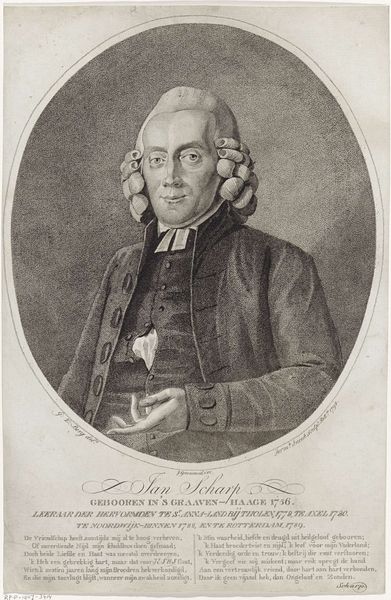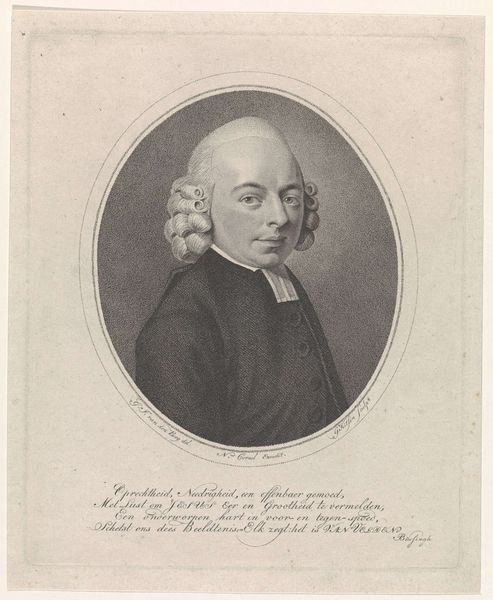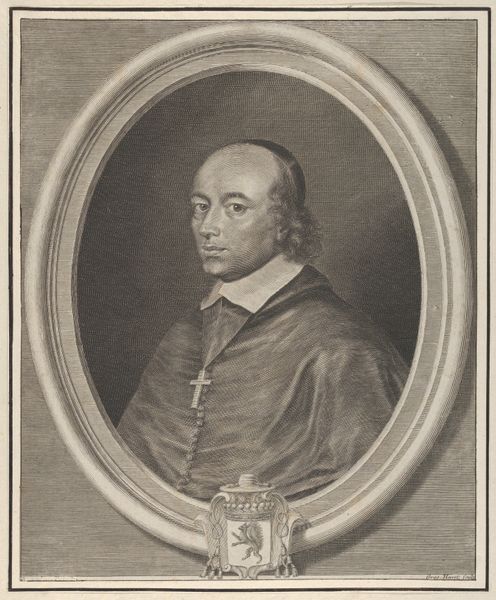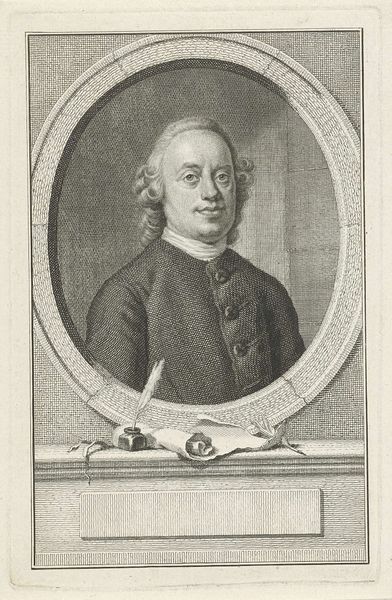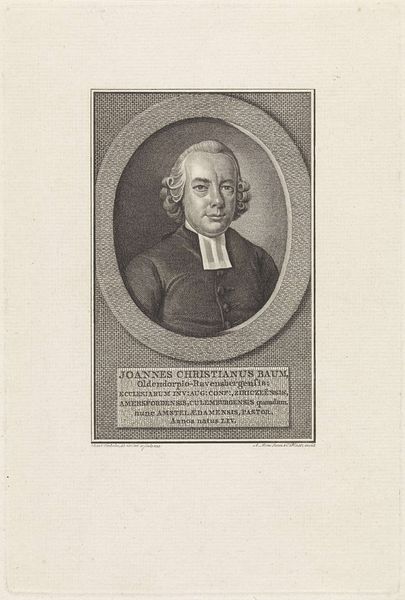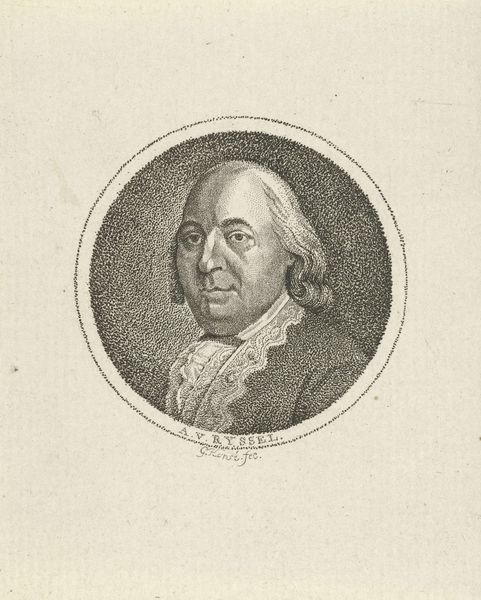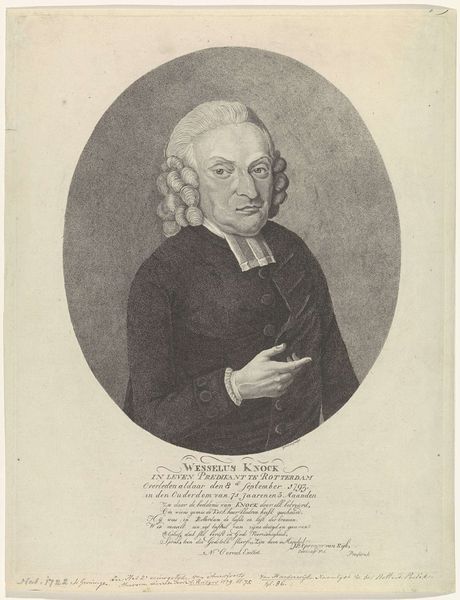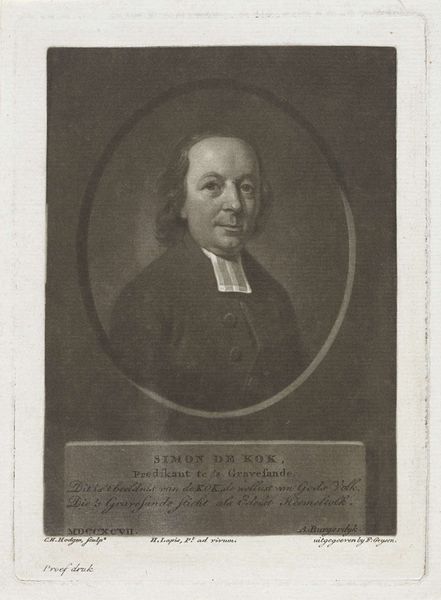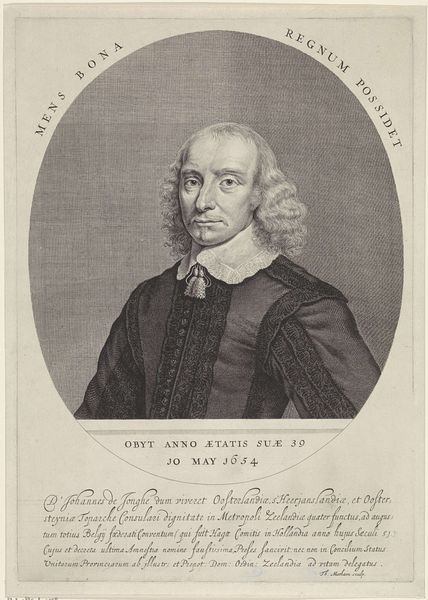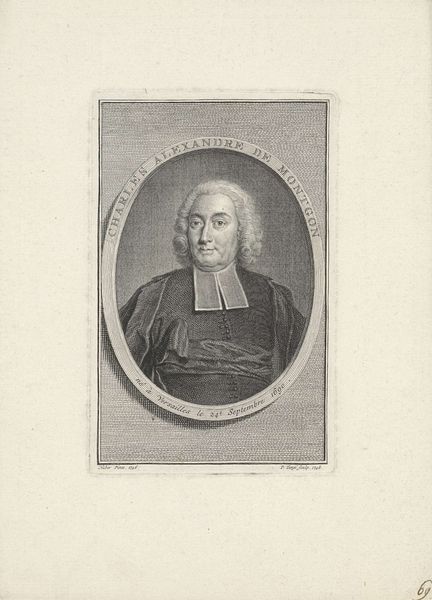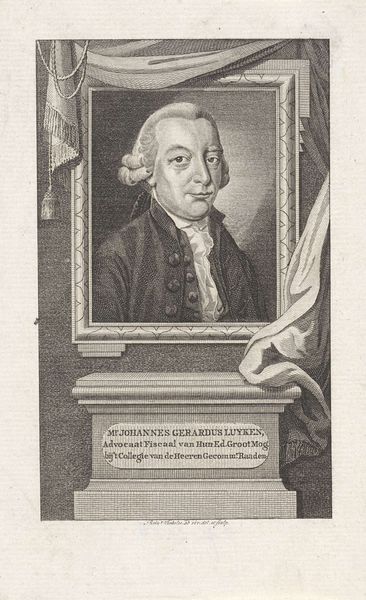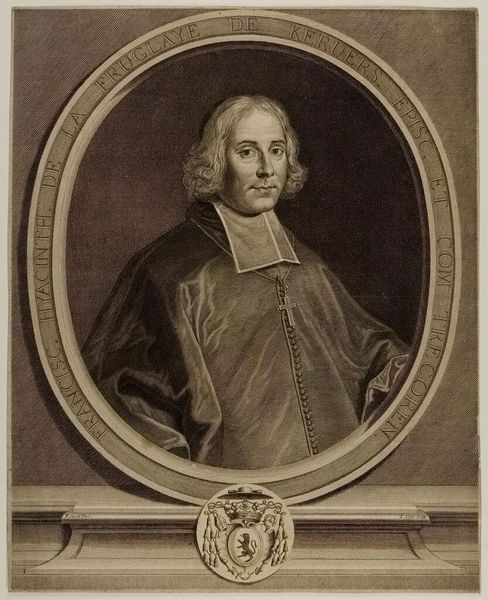
#
pencil drawn
#
light pencil work
#
shading to add clarity
#
pencil sketch
#
old engraving style
#
personal sketchbook
#
portrait reference
#
pencil drawing
#
limited contrast and shading
#
pencil work
Dimensions: height 368 mm, width 265 mm
Copyright: Rijks Museum: Open Domain
Editor: So, this is "Portret van Jan Scharp," created before 1794, currently residing in the Rijksmuseum. It appears to be a pencil drawing or perhaps an engraving. The limited contrast gives it a rather... historical feel. What do you see in this piece from your perspective? Curator: I see a portrait deeply embedded in the modes of production and consumption of its time. The very choice of pencil, a relatively accessible material, signals a shift away from the more lavish, oil-based portraiture reserved for the elite. Who was Jeremias Snoek, the one that made the work? How does Snoek, as the maker, position himself within the socio-economic strata through his choice of material and technique? Editor: That's an interesting angle, I hadn't considered the pencil itself as a deliberate choice reflecting a broader shift in artistic materials. So you are saying this wasn't just about cost but making an argument on material? Curator: Precisely. It’s about access and democratisation, questioning the established hierarchies within the art world. Who was Jan Scharp? The artwork inscription identifies him as "LEERAAR DER HERVORMDEN" so his position allowed a non-elite artist such as Snoek to choose modest, common materials such as pencil or engraving that mirrors the values of the sitter. The level of detail still hints to the mastery, so is it really that different than oils? Editor: That’s fascinating! I was focused on the historical style, but understanding the implications of the artistic materials gives the artwork much deeper resonance. It also sheds light on a growing middle-class and consumption models! Curator: Yes, thinking about art from the perspective of labor, class, and materiality opens it up to new interpretations, offering critical insights to art making beyond aesthetics. Editor: I see what you mean, understanding it through the production helps contextualize it. Curator: Absolutely. Looking closely at how art is made can tell us so much about why it was made and for whom.
Comments
No comments
Be the first to comment and join the conversation on the ultimate creative platform.
